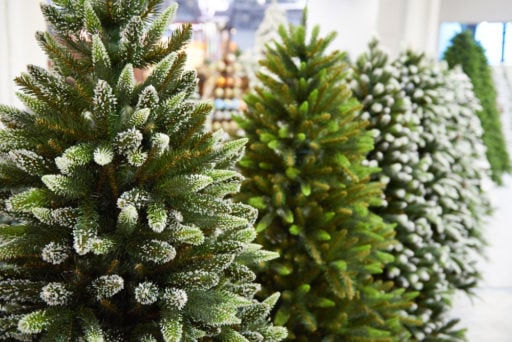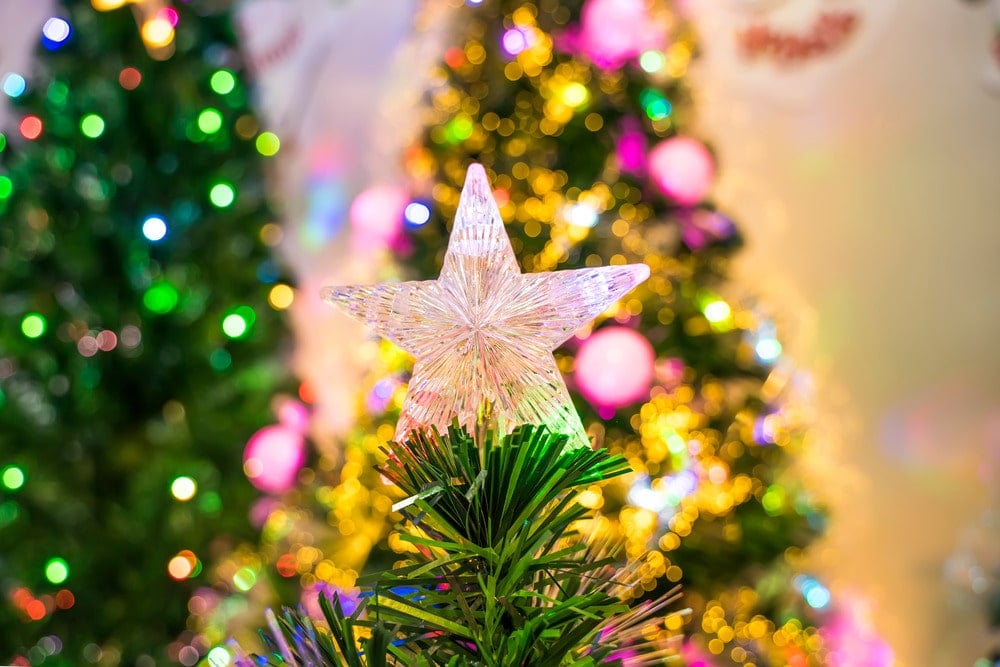
The festive season often brings up the age-old debate: real or artificial Christmas tree? Both have their own unique charm and benefits, but which one is the better choice for your home and the environment?
In this guide, we'll explore the pros and cons of each type, focusing on environmental impact, cost, maintenance, and more, to help you decide which tree will best suit your festive needs.
Are real or artificial Christmas trees better for the environment?
When considering the environmental impact of Christmas trees, it's essential to weigh the pros and cons of both real and artificial trees.
Real Christmas trees
These trees are a renewable resource, typically grown on farms that plant new trees every year. While they capture carbon during their growth, their production and transportation have an environmental impact.
The use of water, pesticides, and fuel for transportation all contribute to their carbon footprint. Additionally, proper disposal or recycling after the holiday season is crucial to minimise their environmental impact.
Many local authorities offer recycling programs where trees are turned into mulch or composted, but if a tree ends up in a landfill, it can contribute to methane emissions as it decomposes.
Artificial Christmas trees
If you keep your artificial tree for several years, its overall carbon footprint can be lower than purchasing a real tree annually.
This is especially true if you purchase a high-quality tree that lasts for several years. At Christmas Tree World, we offer a 10-year foliage guarantee, ensuring that your artificial tree remains a beautiful and sustainable option year after year.
While artificial trees are often made from PVC materials, avoiding the annual cutting down of real trees means less deforestation.
Advantages of having an artificial tree
Choosing an artificial tree comes with several benefits that make it an attractive option for many households.
-
Cost-effective
One of the most significant advantages of artificial trees is their cost-effectiveness. While the initial purchase may be more expensive than a real tree, an artificial tree can be reused year after year, making it a wise investment.
Plus, with our 10-year foliage guarantee at Christmas Tree World, you can rest assured that your tree will look stunning for many festive seasons to come.
-
Low maintenance and no mess
Artificial trees require minimal upkeep compared to real ones. There's no need to water them or worry about needles dropping all over your floor. You can also buy pre-lit trees to save the hassle of stringing lights each year!
This low-maintenance aspect is perfect for busy families who want to enjoy the festive season without the hassle of constant cleaning.
-
Durability
Artificial trees are built to last, and many can withstand years of use without showing significant signs of wear.
This durability means that you won't need to replace your tree as often as you might with a real tree, making it a more sustainable choice over time.
-
Wide range of choices
Artificial trees come in a wide variety of shapes, sizes, and styles, allowing you to find the perfect tree for your home. Whether you're looking for a traditional green tree or a more modern pre-lit or snowy tree, there's something for everyone.
-
Lower fire risk
Our artificial trees at Christmas Tree World are fire retardancy certified, reducing the risk of fire compared to real trees, which can dry out and become a hazard.
Cons of artificial trees
-
Require storage
One of the downsides of an artificial tree is the need for storage. Unlike real trees, which are disposed of after the holiday season, artificial trees must be stored properly to maintain their shape and condition.
At Christmas Tree World, we offer storage bags designed to keep your tree safe and sound until the next festive season.
-
No natural scent
Artificial trees lack the fresh, piney scent of a real tree. However, this can be easily remedied by using scent sticks or other scented decorations to bring that authentic Christmas aroma into your home.
-
Assembly and disassembly
While artificial trees are designed for easy setup, the process of assembling and disassembling the tree can still be time-consuming, especially for larger or more intricate models.
However, many of our trees feature colour-coded hook-on branches to make the process as smooth and straightforward as possible.

Advantages of having a real Christmas tree
Despite the benefits of artificial trees, there are still plenty of reasons why some people prefer the real deal.
-
Authenticity
Real trees have a natural beauty and authenticity that many people appreciate. They come in various species, such as pine, fir, or spruce, each with a unique appearance, scent, and needle structure.
-
Support local businesses
Buying a real tree often means supporting local farmers and businesses, contributing to the local economy and ensuring that you're getting a tree that's been grown with care.
-
Natural scent
The natural scent of a real tree is a significant draw for many people. The smell of fresh pine fills your home with the essence of the festive season, creating a warm and inviting atmosphere.
Cons of real Christmas trees
However, real trees come with their own set of challenges that may make them less appealing to some.
-
Maintenance
Real Christmas trees require regular and diligent care to keep them looking fresh throughout the holiday season. This includes daily watering to prevent the tree from drying out, as well as frequent sweeping or vacuuming to clean up the fallen needles.
The constant upkeep can become time-consuming and messy, especially for those who lead busy lives or who don’t have the patience for extra chores during an already hectic season.
-
Safety concerns
As real trees dry out, especially in heated indoor environments, they become more susceptible to catching fire. Even with proper watering, a real tree can still pose a higher fire risk compared to an artificial one.
While many families still safely enjoy real trees, the added caution required can be a worry for those with children, pets, or older relatives.
-
Delivery issues
Getting a real tree into your home can be a logistical challenge. Transporting a large, bulky tree often requires a suitable vehicle, which not everyone has.
If you opt for delivery, the service may come with extra fees, and you might need to be home to receive the tree, adding inconvenience to the process.
-
Lifespan
Most real trees last only four to five weeks before they start to dry out and shed their needles, meaning they’re only suitable for one Christmas.
Once the season is over, disposing of the tree can be another hassle, as you’ll need to find a local disposal or recycling program or transport the tree yourself to a designated location.
-
Allergies
Some people may be allergic or sensitive to the smell and pollen of real trees. Allergens like mildew, dust, and tree sap can cause allergic reactions.
It's important to consider any potential allergies or respiratory issues before choosing a real tree.
-
Cost
While the upfront cost of a real tree might seem more affordable than an artificial one, the expense can add up significantly over time.
Since a real tree needs to be purchased annually, it can become a recurring cost that quickly becomes more expensive than the one-time purchase of a quality artificial tree.
Find quality artificial Christmas trees at Christmas Tree World
At Christmas Tree World, we offer a wide range of high-quality artificial Christmas trees that combine the best aspects of real trees with the convenience and durability of artificial ones.
With our 10-year foliage guarantee, fire retardancy certification, and a vast selection of styles and sizes, you're sure to find the perfect tree to make this Christmas the most magical one yet.
FAQs
Do more people buy real or fake Christmas trees?
The trend is shifting towards artificial trees, also known as 'fake trees', with more people opting for their convenience, cost-effectiveness, and environmental benefits.
While real trees still have their fans, the ease of use and long-term savings of a fake Christmas tree is making them an increasingly popular choice.
Are there any environmentally friendly artificial Christmas trees?
Yes, many artificial trees are designed to be more environmentally friendly. By choosing a high-quality tree and using it for several years, you can reduce your environmental impact. Additionally, some manufacturers use recycled materials in their trees, further lowering the carbon footprint.
It’s also worth considering the company that you’re buying your trees from. Do they commit to sustainability and corporate social responsibility? For example, we’re proud to say at Christmas Tree World that we plant one tree for every order placed!











